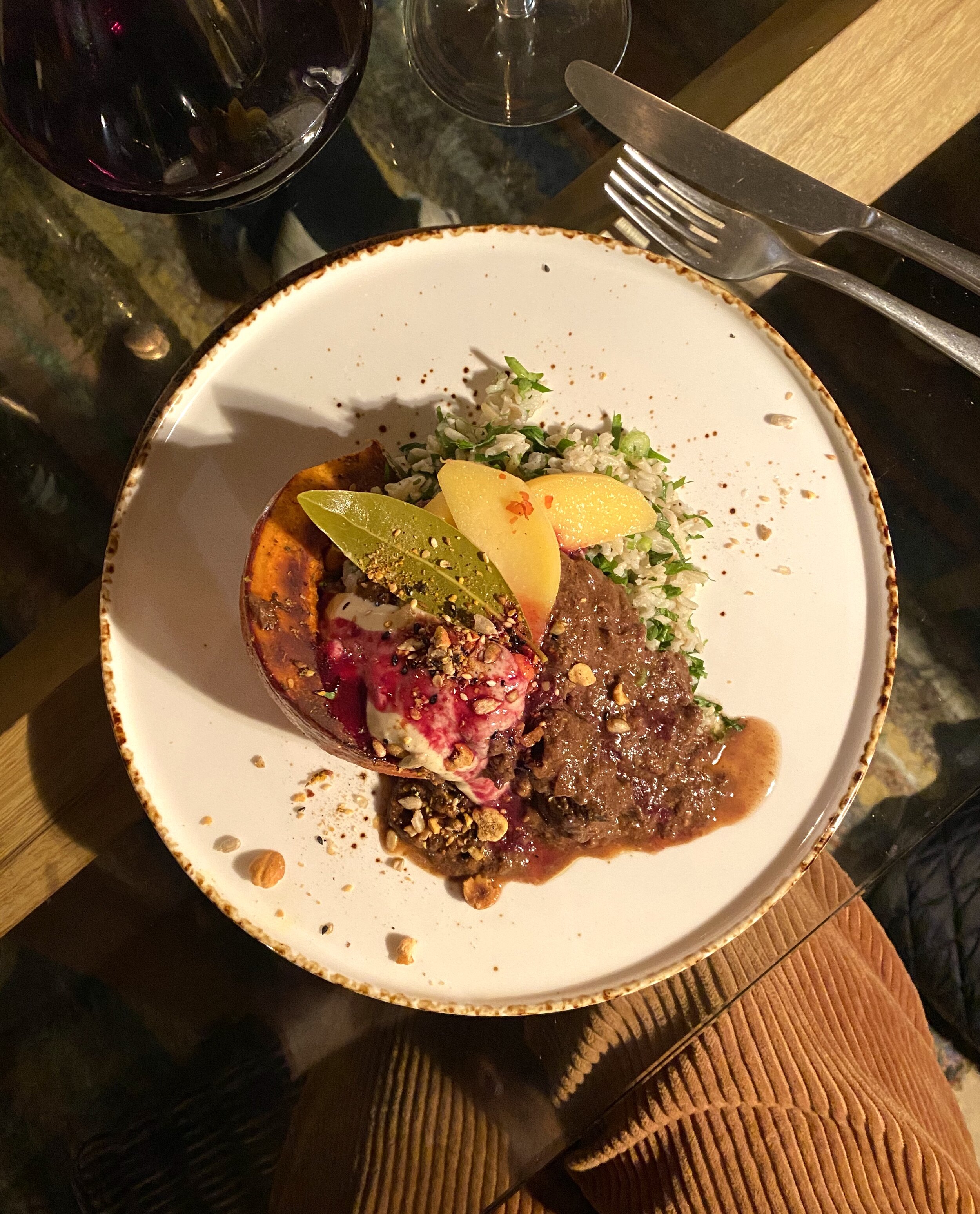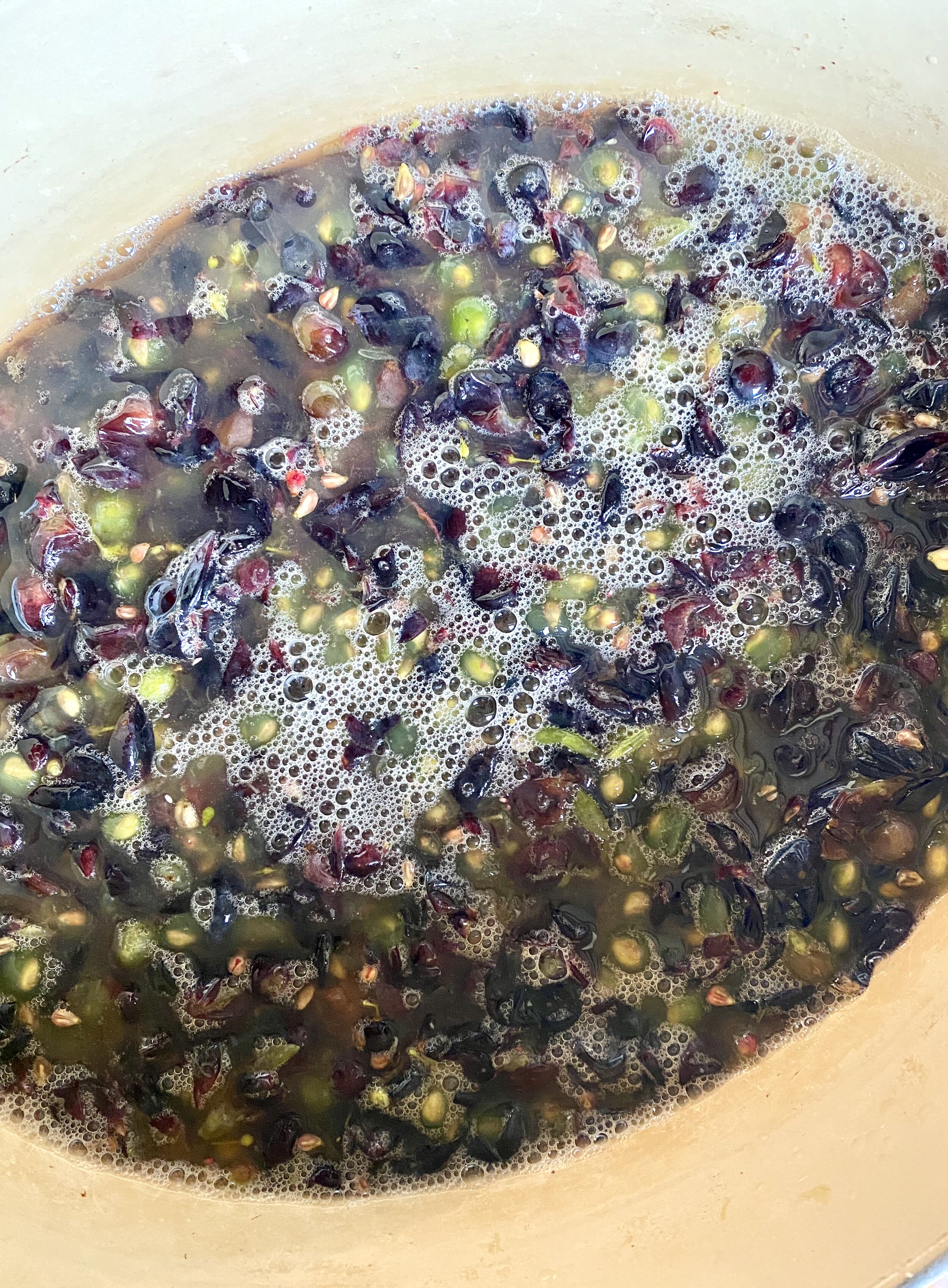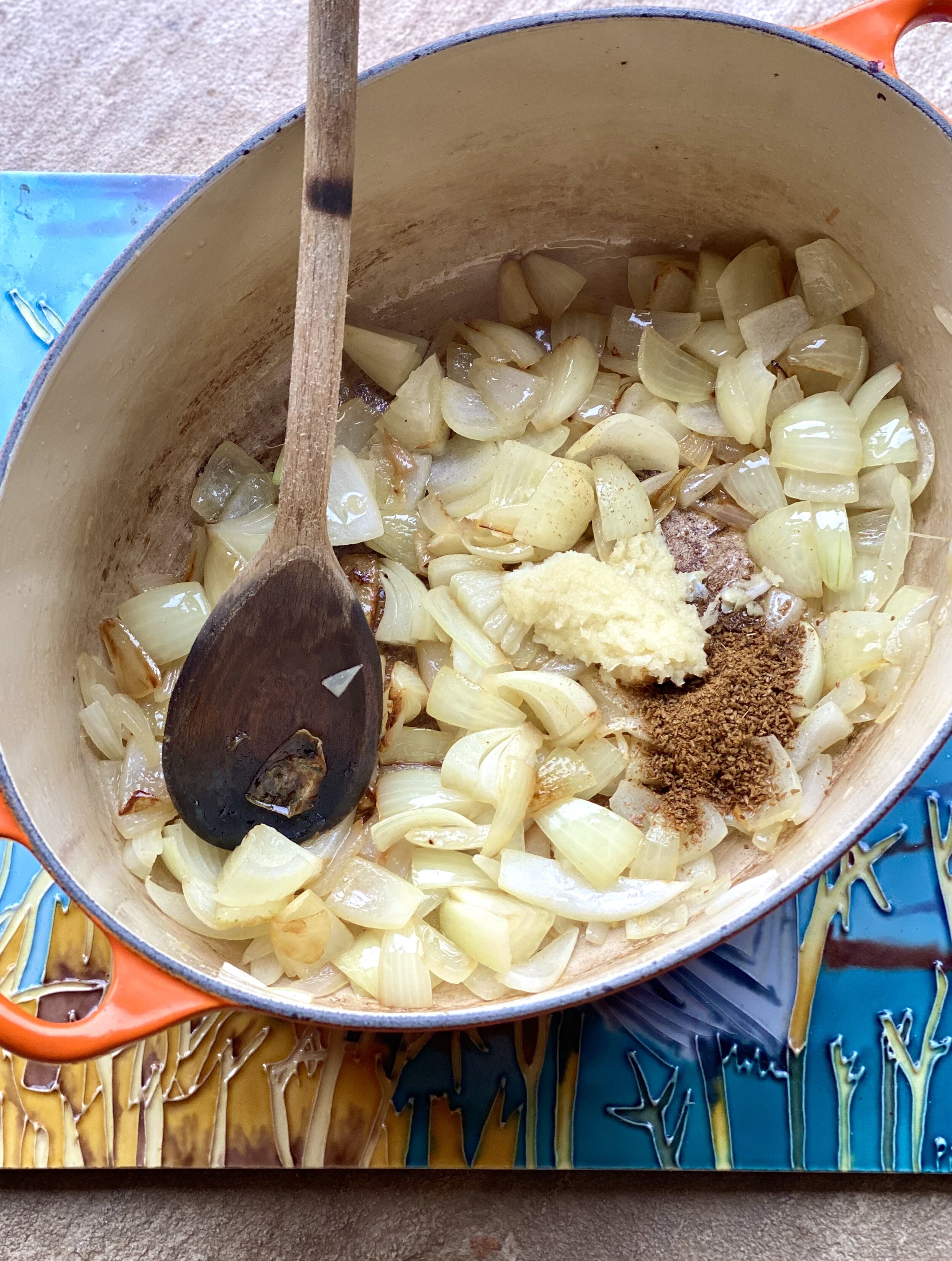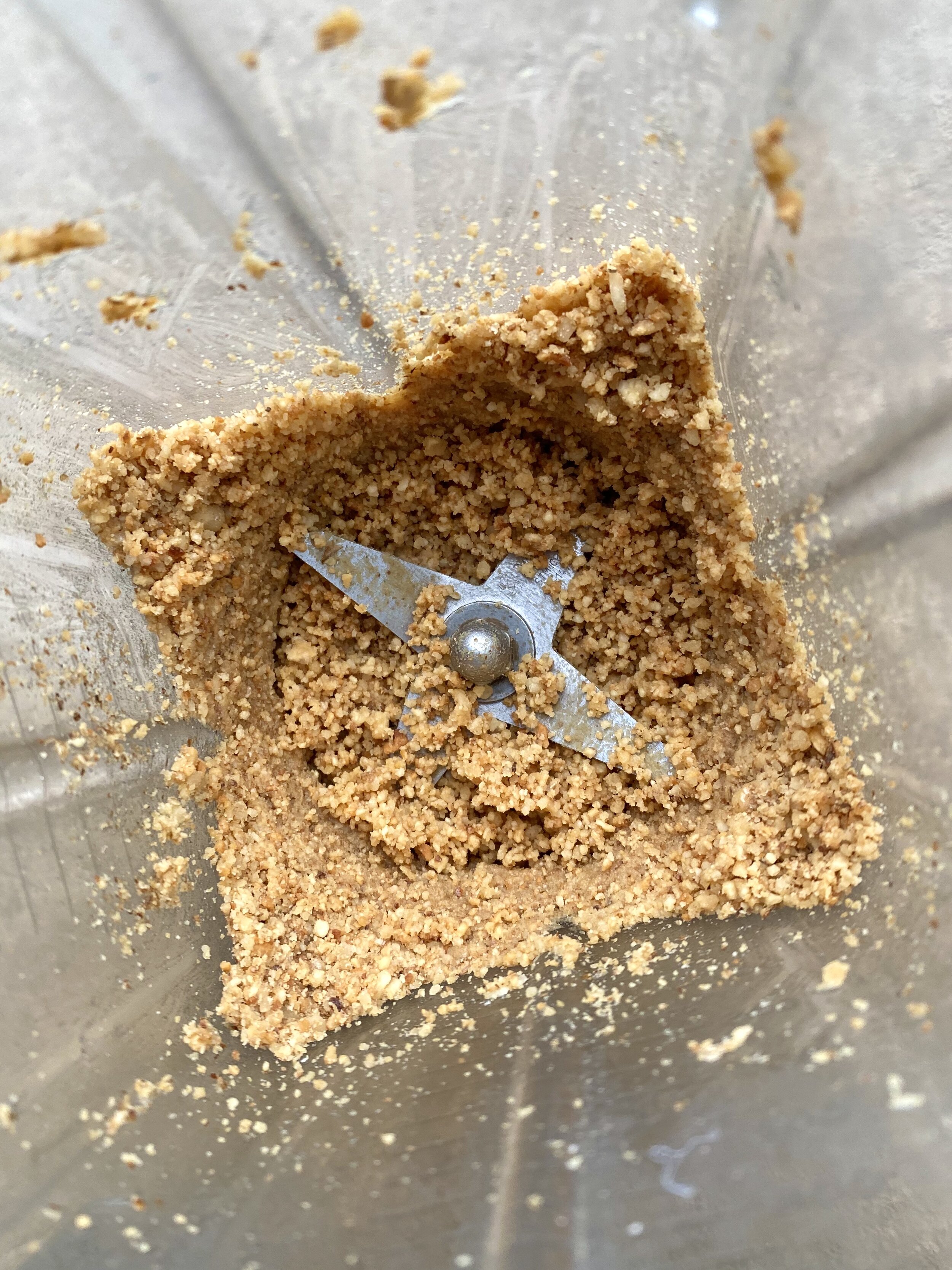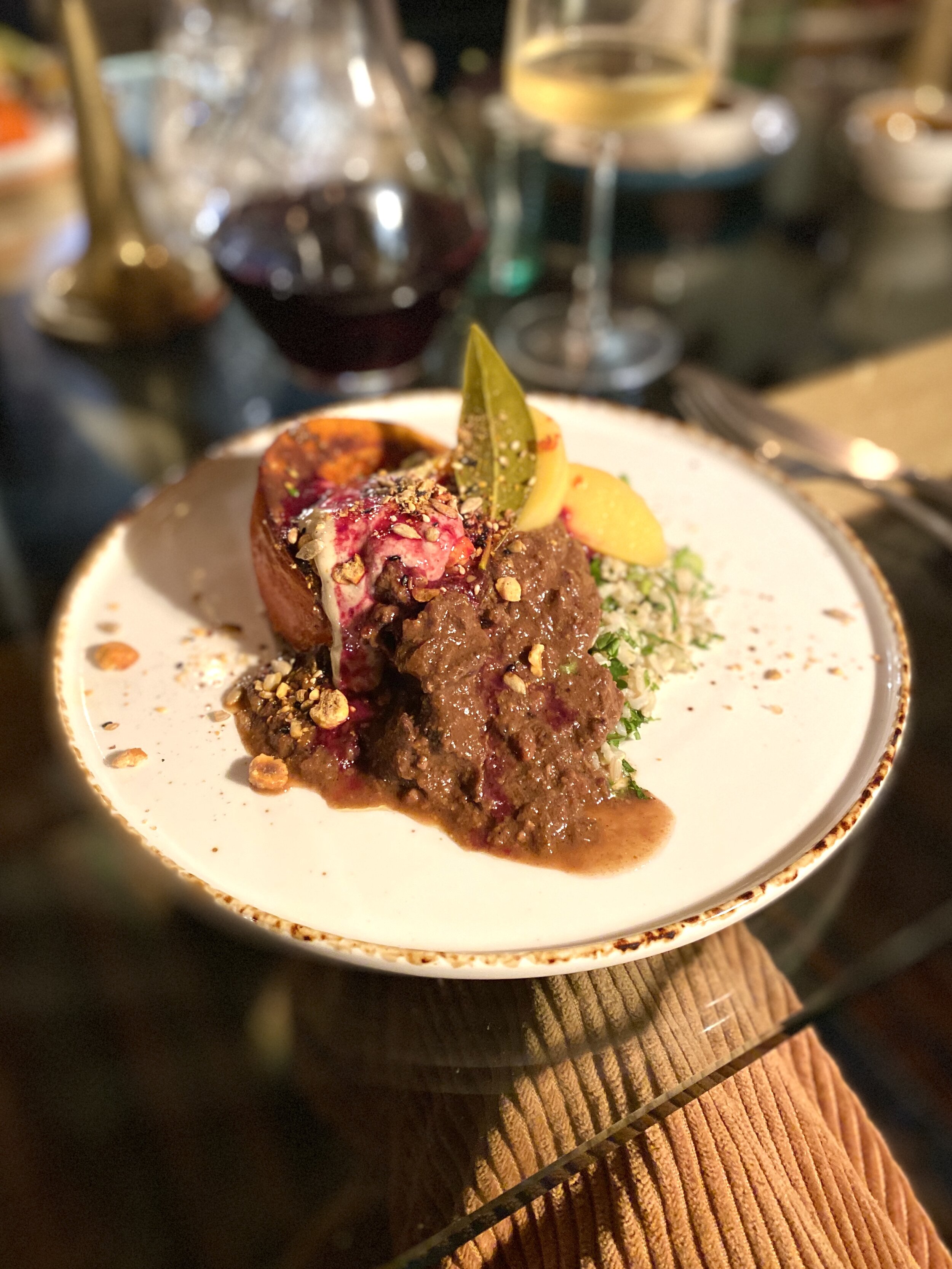Venison & walnut stew
Here we took inspiration from fresenjan - a wickedly delicious, slow-cooked Persian chicken casserole with pomegranate and ground walnuts. Ever keen to keep the key ingredients a little closer to home we used local wild venison as well as heaps of humble onions.
The stew is layered and laced with gentle spices such as cumin, turmeric, cinnamon and allspice, and wonderfully rich and oily walnuts add some welcomed fat to this ultra lean meat. Flavours are brightened and bolstered by the tang of fruit molasses. In our efforts to use local ingredients where possible we used some of our homemade grape molasses but pomegranate molasses is the original and it’s exquisitely tart flavour is divine.
If you’re hosting a supper this autumn we urge you to give this one a go. Our guests each adorned their bowls with dukkah, tahini, pickled quince and extra grape molasses which we’d plonked on the table. Rice tabbouleh with plenty of fresh herbs was a great accompaniment.
Prep time: 20-30 minutes
Cook time: 3+ hours
This recipe serves 4 generously or 6 as a main course with extra sides such as roasted squash, steamed greens and brown rice tabbouleh
Ingredients:
110g / 1 heaped cup shelled walnuts
750 g diced venison
4-6 brown onions, depending on size
6 tbsp olive oil
2 tbsp butter
4 cloves garlic
2 tsp cumin seeds
½ tsp ground turmeric
¼ tsp ground cinnamon
¼ tsp ground allspice
500ml stock or water
60 ml / ¼ cup grape/pomegranate molasses
2 tbsp runny honey
Sea salt & pepper
Method:
Preheat the oven to 160 degrees. Once preheated, toast the walnuts for 6-8 minutes. Allow the walnuts to cool, then blitz in a food processor/small jug blender/nutribullet until very finely ground.
Dice the venison into 2 cm pieces and chop the onions into chunky pieces.
Place a small saucepan over a medium heat and dry-toast the cumin seeds for two minutes just until you can smell their aroma being released. Tip into a pestle and mortar and coarsely grind. Keep to one side until needed.
Now fire up two hobs simultaneously; place a large frying pan on a high heat, and place a heavy-based casserole dish on a medium/low heat. Add 2 tablespoons of butter and 2 tablespoons of olive oil to the casserole dish and start frying off the onions with a pinch of salt.
Meanwhile, heat 2 tablespoons of olive oil in the frying pan and once hot fry off the diced venison in batches. Season the meat as you go and don’t crowd the pan - allow the meat to caramelise and take on a dark colour, even a little char. Tip the browned meat onto a plate as you go.
Fry the onions for 12-15 minutes in total, stirring often until they’re soft, caramelised and golden. Mince the garlic and add this for the last 3 minutes along with the cumin, turmeric, cinnamon, allspice, and one teaspoon of flakey sea salt.
Add your browned venison into the casserole dish, and deglaze the frying pan with a splash of water. Tip this into the casserole dish too as it will have heaps of deep and complex flavour.
Finally, add 500ml of water, the grape or pomegranate molasses, the honey and the blitzed walnuts to the casserole dish. Pop on the lid and keep the heat as low as possible. Simmer for two hours, stirring often.
After 2 hours, remove the lid and continue simmering for a further 60-90 minutes to reduce and intensify. The sauce will be rich and dark, and the venison so collapse when pushed with the back of a wooden spoon. Taste the stew and adjust the seasoning if needs be - more salt? more acidity from a spoon of molasses?
Serve in warmed bowls with brown rice tabbouleh and extra molasses, dukkah and tahini at the table. In terms of veggies, we opted for some roast squash and simple greens. Enjoy.
And the wine pairing? An Agentinian Malbec.
While venison meat is lean, this stew is elegantly rich thanks to all the healthy oils in the toasted and blended walnuts.... and tannins and fat go hand in hand. Tannins help strip and cleanse the palate between mouthfuls of rich food - sandpaper for any grease on your gums, if you will! - and in turn, fat softens the edges of a tannic wine.


